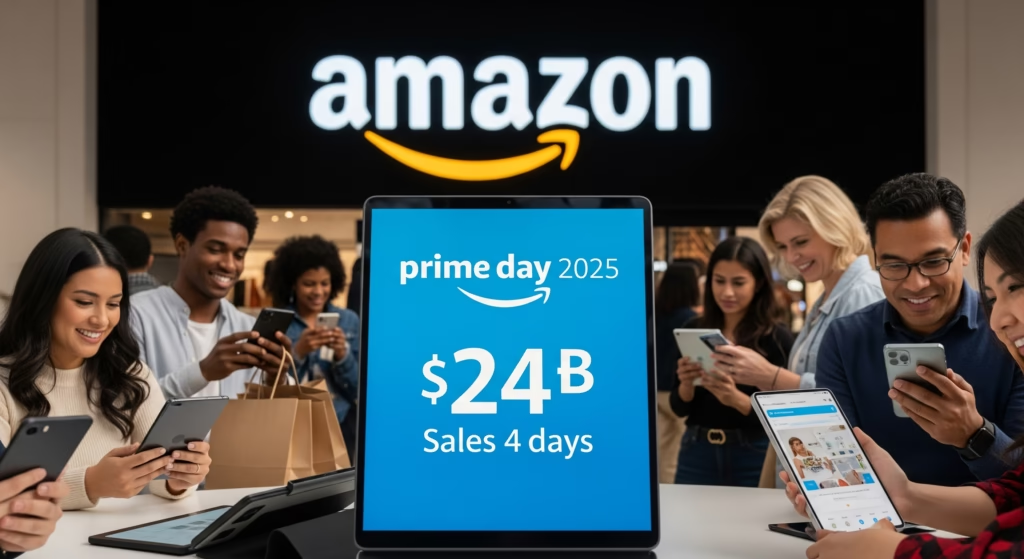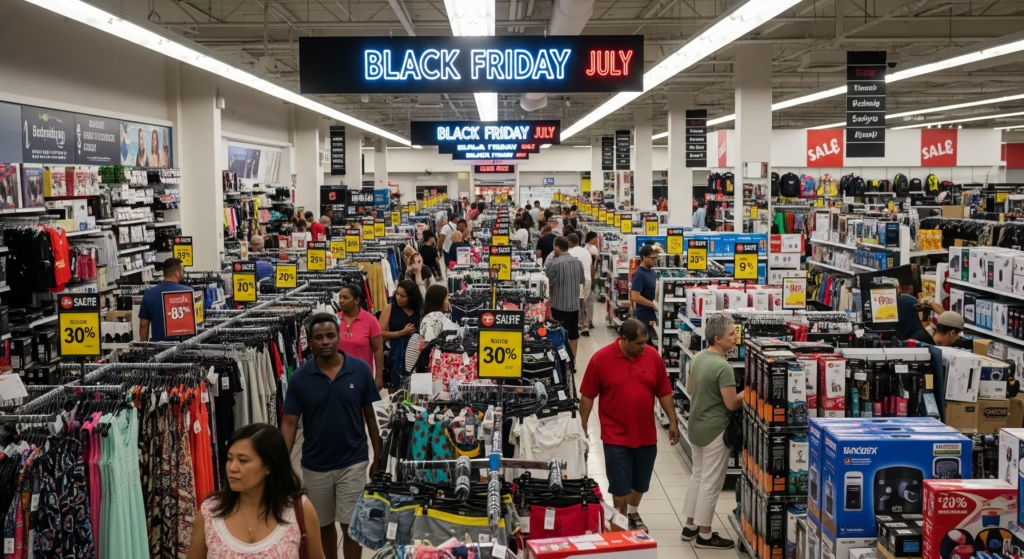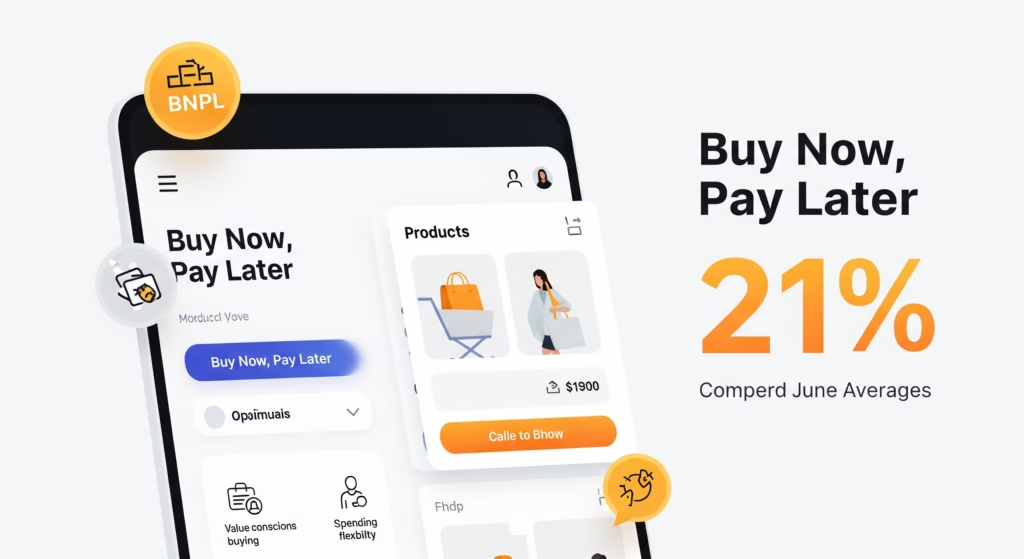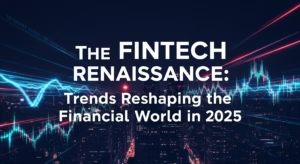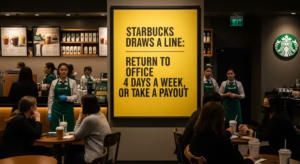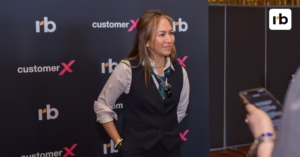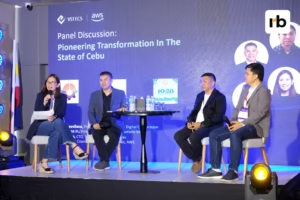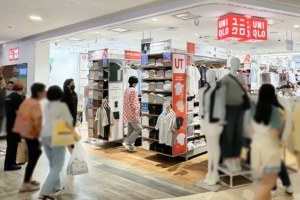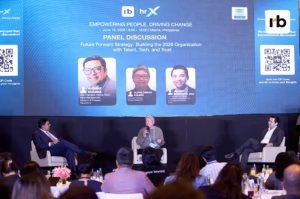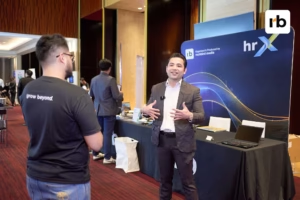Amazon has once again made history. But this time, it’s not just about record sales, it’s about redefining the pace, strategy and tech DNA of modern retail.
From “Event” to Retail Ecosystem
What began as a two-day midyear sale in the past has now grown into a four-day omnichannel retail powerhouse. According to Adobe Analytics, Prime Day 2025 generated $24.1 billion in online sales in the U.S. alone, outpacing projections and exceeding two Black Fridays combined. Behind that number is a story of innovation, shifting shopper behavior and new strategies retailers can’t afford to ignore.
Amazon’s own report shows major traction across categories such as electronics, beauty and home goods, with sellers on its marketplace seeing record participation. Meanwhile, rivals like Target, Walmart and Best Buy launched parallel events to grab share of wallet during what’s now seen as “Summer’s Super Bowl” of retail.
Key Data Points:
- $24.1 billion total U.S. online spend (Adobe)
- +30.3% YoY growth from Prime Day 2024 (Barron’s)
- 3,300% increase in GenAI-driven traffic, showcasing AI’s growing role in shopper discovery (TechCrunch)
- 52% of purchases happened on mobile devices
What’s Really Changing in Retail?
Consumer Behavior
Prime Day is no longer just about deals, it’s now a seasonal ritual. Adobe called it a “Black Friday in July”, and retailers are adapting.
Extended Urgency
While sales lasted longer, the rush on Day 1 was slightly softer. Analysts from Momentum Commerce argue that elongated windows reduce FOMO but increase overall volume and reach.
AI Integration
The 3,300% traffic surge through GenAI-powered discovery tools underscores how AI is now shaping consumer pathways, not just product recommendations.
Checkout Trends
Buy Now, Pay Later” (BNPL) saw a spike of 21% compared to June averages, highlighting value-conscious buying and spending flexibility.
The Future: Always-On Retail
Prime Day is no longer just a date on the calendar, it’s becoming a playbook for modern retail. What was once a midsummer sales event is now a testing ground for how brands build momentum beyond traditional peaks like Q4. and what we’re seeing is the rise of a new retail rhythm, one that’s always on, data guided and deeply experiential.
Ownable Micro-Seasons: Retailers are learning to craft their own “mini-holidays.” Whether it’s Midyear Madness, Back-to-School Heatwave or Tech-tember, the goal is to create cultural relevance, not just clearance sales. These micro-seasons allow brands to connect more meaningfully with shifting consumer moods and build urgency year-round.
AI-Guided Merchandising: It’s not just about what sells anymore, it’s about what will sell. AI and predictive analytics are redefining merchandising, enabling retailers to forecast demand, personalize pricing and design smarter deal flows. Retail is moving from reactive promotions to pre-emptive engagement.
Experience-First Commerce: Prime Day has proven that the new frontier of shopping is interactive and community-driven. Livestream flash deals, influencer-curated bundles, gamified carts; today’s consumers don’t just click, they connect. The line between content and commerce is vanishing, giving rise to immersive experiences that entertain while they convert.
So What’s Next?
The future of commerce is not just faster or bigger, it’s smarter, closer and always on. And if Prime Day is any indication, the brands that win won’t just be the loudest; they’ll be the ones that listen best, learn fast and launch even faster.
Behind every sale is a story: families buying first laptops, parents stocking up before school starts, small brands finding breakthrough moments and shoppers using AI to stretch every dollar
Prime Day isn’t just a shopping event, it’s a snapshot of human desire, digital ingenuity and the power of connection. If we listen closely, retail is telling us what’s next: a more personal, purposeful and shared buying story.
Explore more insights from retail: Small Space, Big Shift: Uniqlo’s Mini Outlet Is Redefining Convenience Retail

